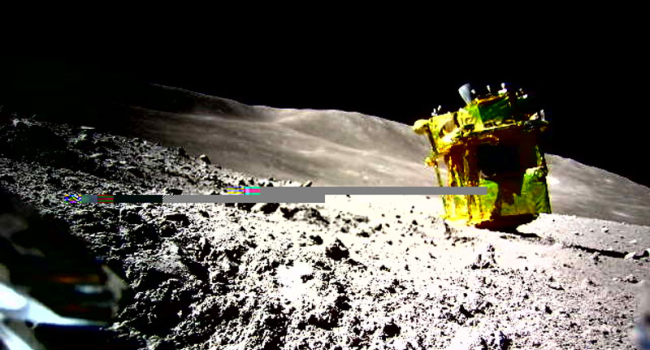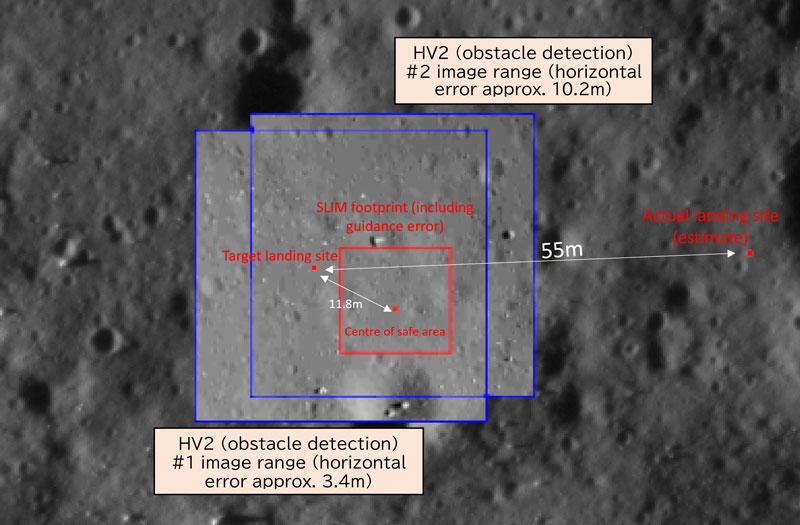
Japanese SLIM module lands on Moon, but upside down: What is the reason?
The Japanese Aerospace Exploration Agency (JAXA) has provided details about the landing of the SLIM module on the Moon. The descent was gentle, but ultimately, the spacecraft overturned. Apparently, at an altitude of 50 meters during an obstacle avoidance maneuver, one of the two main engines of the module lost thrust, leading to an emergency landing. However, this doesn't mean all hope is lost. There remains a chance for the module to charge its batteries and continue operations.
The SLIM module touched down on the Moon at a speed of 1.4 m/s, well within the acceptable range. The landing was executed smoothly even with only one of the two engines functioning. This achievement makes Japan the fifth country in the history of space exploration to successfully land a descent vehicle on our satellite. However, due to the failure of one engine and deviation in the module's horizontal orientation, a significant lateral speed resulted in the module tipping over.
The SLIM module flipped upside down, more precisely, it landed on its head. Unfortunately, the solar panels ended up fully turned away from the Sun. This was the most unfavorable scenario, and it happened purely by chance. There is hope that the Sun will gradually move, allowing its rays to illuminate the back of the module, where the solar panels are rigidly attached.
The module landed on the lunar surface at 00:20 local Tokyo time. Power to the systems was cut at 00:57 when telemetry data and camera images were captured. Further draining of the limited battery resources was not possible. The mission team reserved some energy for potential equipment reboot if the battery charge is restored.

Another objective of the SLIM mission was to land with a deviation of no more than 100 meters from the target point. Although data is still being refined, the module successfully accomplished the task by deviating approximately 55 meters from the target point. A more precise estimation of the deviation will be available later.
All scientific equipment on the module was operational, at least as long as it remained connected to power. During its operation, the multi-beam camera's low-resolution optics (MBC) were activated, and even in an inverted position, it traversed the lunar surface, identifying targets for subsequent scanning by the high-resolution spectral camera. In case power is restored, the equipment can thoroughly study interesting objects.
Additionally, the successful deployment of two miniature probes, LEV-1 and LEV-2, was achieved. The latter, created in collaboration with Sony in the form of a ball that splits into two halves, captured a side-view image of the landing module. Expectations are for further updates, as JAXA promises to keep everyone informed of all events, especially considering the uncertainty regarding the failure of one of the engines.
- Related News
- Wheel of Death: new method will help astronauts stay fit in low gravity
- Due to anomalies of Orion spacecraft, lunar exploration program may be delayed for years։ NASA
- TAO Observatory: World's highest telescope to study evolution of galaxies and exoplanets
- Powerful M9.5 solar flare causes radio blackout in Pacific Ocean
- What will happen to the Earth if the Moon disappears?
- Key to conquering the Red Planet: Why is NASA studying solar storms on Mars?
- Most read
month
week
day
- Digital Julfa Network is launching a pan-Armenian centre in the metaverse, on the Fastexverse virtual platform 904
- Sparkles: Boston Dynamics unveils a furry robot dog that can dance (video) 790
- Xiaomi unveils exclusive Redmi Note 13 Pro+ dedicated to Messi and Argentina national team 777
- Is there a ninth planet in the solar system? Scientists find new evidence 670
- Smartphone catches fire in child's hand in Russia 655
- What will happen to the Earth if the Moon disappears? 645
- How to understand how protected a smartphone is from water and dust? 634
- World's largest 3D printer was created in USL It prints 29 meter-long structures 620
- iPhone 16 may get colored matte glass back panel, 7 colors 610
- New iPad Pro to receive M4 chip and to be more powerful than Apple computers 606
- Archive
